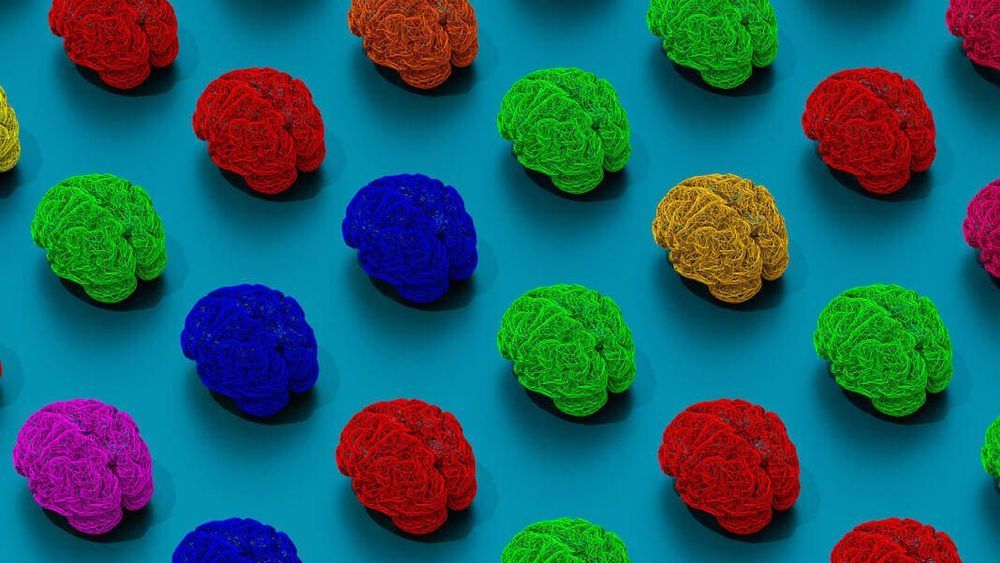Archive for the ‘bioengineering’ category: Page 127
Sep 14, 2019
Meet the 8 Tech Titans Investing in Synthetic Biology
Posted by Genevieve Klien in categories: bioengineering, biotech/medical, computing, food, sustainability
“DNA is like a computer program but far, far more advanced than any software ever created.” Bill Gates wrote this in 1995, long before synthetic biology – a scientific discipline focused on reading, writing, and editing DNA – was being harnessed to program living cells. Today, the cost to order a custom DNA sequence has fallen faster than Moore’s law; perhaps that’s why the Microsoft founder is turning a significant part of his attention, and wallet, towards this exciting field.
Bill Gates is not the only tech founder billionaire that sees a parallel between bits and biology, either. Many other tech founders – the same people that made their money programming 1s and 0s – are now investing in biotech founders poised to make their own fortunes by programming A’s, T’s, G’s and C’s.
The industry has raised more than $12.3B in the last 10 years and last year, 98 synthetic biology companies collectively raised $3.8 billion, compared to just under $400 million total invested less than a decade ago. Synthetic biology companies are disrupting nearly every industry, from agriculture to medicine to cell-based meats. Engineered microorganisms are even being used to produce more sustainable fabrics and manufacture biofuels from recycled carbon emissions.
Sep 13, 2019
Dr. Anthony Atala — Wake Forest School of Medicine — Organ Bio-Printing — IdeaXme Show — Ira Pastor
Posted by Ira S. Pastor in categories: 3D printing, aging, bioengineering, bioprinting, biotech/medical, business, health, life extension, science, transhumanism

Sep 9, 2019
Genome engineering with CRISPR/HDR to diversify the functions of hybridoma-produced antibodies
Posted by Saúl Morales Rodriguéz in categories: bioengineering, biotech/medical, genetics, life extension
Bioengineers and life scientists incorporate hybridoma technology to produce large numbers of identical antibodies, and develop new antibody therapeutics and diagnostics. Recent preclinical and clinical studies on the technology highlight the importance of antibody isotypes for therapeutic efficacy. In a new study, a research team in Netherlands have developed a versatile Clustered Regularly Interspaced Short Palindrome Repeats (CRISPR) and homology directed repair (HDR) platform to rapidly engineer immunoglobin domains and form recombinant hybridomas that secrete designer antibodies of a preferred format, species or isotype. In the study, Johan M. S. van der Schoot and colleagues at the interdisciplinary departments of immunology, proteomics, immunohematology, translational immunology and medical oncology, used the platform to form recombinant hybridomas, chimeras and mutants. The stable antibody products retained their antigen specificity. The research team believes the versatile platform will facilitate mass-scale antibody engineering for the scientific community to empower preclinical antibody research. The work is now published on Science Advances.
Monoclonal antibodies (mAb) have revolutionized the medical field with applications to treat diseases that were once deemed incurable. Hybridoma technology is widely used since 1975 for mAb discovery, screening and production, as immortal cell lines that can produce large quantities of mAbs for new antibody-based therapies. Scientists had generated, validated and facilitated a large number of hybridomas in the past decade for preclinical research, where the mAb format and isotypes were important to understand their performance in preclinical models. Genetically engineered mAbs are typically produced with recombinant technology, where the variable domains should be sequenced, cloned into plasmids and expressed in transient systems. These processes are time-consuming, challenging and expensive, leading to outsourced work at contract research companies, which hamper the process of academic early-stage antibody development and preclinical research.
In its mechanism of action, the constant antibody domains forming the fragment crystallizable – (Fc) domain are central to the therapeutic efficacy of mAbs since they engage with specific Fc receptors (FcRs). Preceding research work had highlighted the central role of Fc in antibody-based therapeutics to emphasize this role. Since its advent, CRISPR and associated protein Cas-9 (CRISPR-Cas9)-targeted genome editing technology has opened multitudes of exciting opportunities for gene therapy, immunotherapy and bioengineering. Researchers had used CRISPR-Cas9 to modulate mAb expression in hybridomas, generate a hybridoma platform and engineer hybridomas to introduce antibody modification. However, a platform for versatile and effective Fc substitution from foreign species within hybridomas with constant domains remains to be genetically engineered.
Sep 6, 2019
James Strole: Advocacy, Education, Awareness About Radical Life Extension
Posted by Paul Battista in categories: bioengineering, biotech/medical, education, life extension, quantum physics

Ira Pastor, ideaXme longevity and aging ambassador and founder of Bioquark, interviews James Strole, Co-Founder and Co-Director of People Unlimited and Director of the Coalition For Radical Life Extension.
Ira Pastor Comments:
Continue reading “James Strole: Advocacy, Education, Awareness About Radical Life Extension” »
Sep 6, 2019
James Strole — Director of the Coalition for Radical Life Extension / Producer of RAADfest — ideaXme Show — Ira Pastor
Posted by Ira S. Pastor in categories: aging, bioengineering, biotech/medical, cryonics, DNA, economics, futurism, genetics, health, life extension

Sep 5, 2019
Johannon BenZion — Ira Pastor — Futurist New Deal Podcast — “Harnessing Nature’s Clues for Regeneration, Disease Reversion, and Rejuvenation”
Posted by Ira S. Pastor in categories: aging, bioengineering, biotech/medical, business, cryonics, futurism, genetics, geopolitics, government, health

Sep 4, 2019
A Brief Tour Through the Wild West of Neural Interfaces
Posted by Shailesh Prasad in categories: bioengineering, genetics
To most of us, zapping neurons with electricity to artificially “incept” memories, sensation, and movement still sounds crazy. But in some brain labs, that technology is beginning to feel old school. As a new review in Nature Biotechnology concludes: get off the throne, electrodes, there are plenty of other neural probes in town. They dance to the tune of light or chemicals, and in some cases, they’re bilingual.
Here’s a brief tour into the wild west of neural implants. Some require genetic engineering, and because of that have only been proven in experimental animals. But if history is any indication, brain-manipulation technologies don’t tend to stay in the lab. Watch out, you may see some trickling down into potential human use in the next few years.
Sep 3, 2019
The Regenerage Show — Episode #3 — “Form Control, Biological Aging, and Why Your Body is NOT a Classic Automobile!” — Ira Pastor
Posted by Ira S. Pastor in categories: aging, bioengineering, biotech/medical, business, cryonics, DNA, health, posthumanism, science, transhumanism

Tags: aging, Alzheimer's, Aubrey de Grey, bioquantine, bioquark, cancer, David Neyland, diabetes, form, george church, health, immortality, larry ellison, larry page, laura deming, Life extension, longevity, Peter H. Diamandis, Peter Thiel, regenerage, regeneration, SENS Research Foundation, sergey brin, spinal cord injury, wellness
Sep 3, 2019
Mr. Osinakachi Akuma Kalu — Founder and Chairman of Transdiciplinary Agora for Future Discussions — ideaXme — Ira Pastor
Posted by Ira S. Pastor in categories: 3D printing, aging, bioengineering, biotech/medical, business, cryptocurrencies, disruptive technology, energy, finance, food













